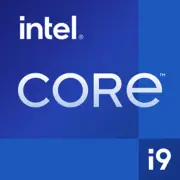Intel Core i9-7940X X-series

Intel Core i9-7940X X-series: Una panoramica completa del processore del 2025
Architettura, prestazioni e rilevanza nell'era delle nuove tecnologie
1. Caratteristiche principali: Potenza di Skylake-X
Il processore Intel Core i9-7940X, lanciato nel 2017, rimane una soluzione di nicchia per i professionisti anche nel 2025. La sua architettura Skylake-X è costruita su un processo tecnologico a 14 nm, che rispetto agli standard attuali risulta inferiore ai chip a 7 nm e 5 nm di AMD e Intel. Tuttavia, i suoi 14 core e 28 thread (frequenza base di 3.1 GHz, modalità turbo fino a 4.4 GHz) garantiscono elevate prestazioni multi-thread.
Caratteristiche principali:
- Supporto per AVX-512 per l'accelerazione dei calcoli scientifici e del rendering.
- 19.25 MB di cache (L3).
- 44 linee PCIe 3.0 (rispetto alle PCIe 5.0 nei nuovi CPU).
- Moltiplicatore sbloccato per l'overclocking.
Prestazioni:
- Geekbench 6: 1333 (Single-Core), 9537 (Multi-Core).
- In compiti multi-thread (come il rendering in Blender) supera molti CPU a 8 core del 2023-2024, ma è inferiore ai moderni Ryzen 9 7950X3D (16 core, Geekbench Multi-Core ~24.000).
2. Schede madri compatibili: Piattaforma LGA 2066
Il processore utilizza il socket LGA 2066 e il chipset X299, limitando così la scelta delle schede madri. Nel 2025, le nuove schede sono rare, ma sul mercato secondario sono disponibili modelli:
- ASUS ROG Rampage VI Extreme (prezzo usato: $200–$300).
- MSI X299 Gaming Pro Carbon AC (prezzo usato: $150–$250).
- Gigabyte X299 AORUS Ultra Gaming (prezzo usato: $180–$270).
Caratteristiche da considerare:
- Verifica il supporto per DDR4-2666 MHz (ufficialmente) e la possibilità di overclock della memoria.
- Per l'overclocking della CPU è necessaria una scheda con un VRM affidabile (ad esempio, 8+ fasi di alimentazione).
- Assicurati della presenza delle porte necessarie (USB 3.1 Gen2, Thunderbolt 3 tramite controller aggiuntivi).
3. Memoria: DDR4 quad-channel
L'i9-7940X supporta DDR4 quad-channel con una capacità massima di 128 GB (frequenza fino a 3600 MHz in overclock). Configurazioni consigliate:
- 4×16 GB DDR4-3200 (ottimale per il rendering).
- 8×8 GB DDR4-3600 (massima larghezza di banda).
Importante: DDR5 non è supportato. Per compiti che richiedono alte velocità di memoria (come il modellismo AI), questo è un grave svantaggio.
4. Alimentatore: Minimo 750W
Con un TDP di 165W e un consumo di picco fino a 300W (in overclock), è necessario un alimentatore con margine:
- Minimo: 750W (ad esempio, Corsair RM750x).
- Consigliato: 850–1000W (Seasonic PRIME TX-850, Be Quiet! Dark Power 12).
Consiglio: Utilizza un alimentatore con certificazione 80+ Gold/Platinum e cavi separati da 8+4 pin per la CPU.
5. Pro e contro
Pro:
- 14 core per $400–$600 (nuove giacenze nel 2025).
- Buon potenziale di overclocking.
- Adatto per workstation.
Contro:
- Elevato consumo energetico e calore.
- Mancanza di PCIe 4.0/5.0 e DDR5.
- Architettura obsoleta rispetto a Zen 4/5 e Intel di 13ª generazione.
6. Scenari d'uso
- Attività lavorative: Montaggio video (Premiere Pro), rendering 3D (V-Ray), compilazione del codice.
- Gaming: Non è la scelta migliore — in Full HD è inferiore al Ryzen 5 7600X a causa di un IPC ridotto. Ma in 4K con RTX 4090 la differenza si riduce.
- Multimedia: Streaming + codifica senza lag.
Esempio pratico: Il montatore Alexey utilizza l'i9-7940X con 64 GB di DDR4 e RTX 4080 per il rendering di video 8K. Secondo lui, la CPU si comporta a livello del Ryzen 9 7900X, ma si surriscalda di più.
7. Confronto con i concorrenti
- AMD Threadripper 1920X (12 core): Più economico ($250 usato), ma più debole nel multi-threading (Geekbench Multi-Core ~7000).
- Intel Core i9-13900K (24 core): Più veloce del 30% in Single-Core, supporta DDR5 e PCIe 5.0 (prezzo nuovo: $550).
- Ryzen 9 7950X (16 core): Multi-Core ~24.000 in Geekbench 6, ma più costoso ($600–$700).
Conclusione: L'i9-7940X è rilevante solo con un budget fino a $500 e la necessità di multi-threading senza aggiornare la piattaforma.
8. Consigli di assemblaggio
- Raffreddamento: Necessaria un'unità di raffreddamento a liquido (ad esempio, Arctic Liquid Freezer II 360) o un dissipatore di fascia alta (Noctua NH-D15).
- Case: Minimo 6 ventole per la ventilazione.
- Scheda madre: Cerca modelli con dissipatori su VRM e aggiornamenti BIOS degli anni 2022+.
- SSD: Utilizza NVMe PCIe 3.0 (Samsung 970 Evo Plus) — più veloce di SATA, ma senza sovrapprezzo per PCIe 4.0.
9. Conclusione: A chi è adatto l'i9-7940X nel 2025?
Questo processore merita considerazione:
- Professionisti con budget limitato, che necessitano di molti core per il rendering.
- Appassionati pronti a sperimentare con l'overclocking su una piattaforma obsoleta.
- Proprietari di X299, desiderosi di aggiornare un vecchio sistema senza cambiare la scheda madre.
Alternativa: Se necessiti di tecnologie moderne (DDR5, PCIe 5.0), è meglio scegliere Ryzen 9 7900X o Intel Core i7-14700K.
Verdetto finale: Intel Core i9-7940X è un "cavallo da lavoro" per compiti specifici, ma non per il gaming o futuri aggiornamenti. Il suo principale vantaggio nel 2025 è il prezzo sul mercato secondario e la comprovata affidabilità.
Di base
Specifiche della CPU
Specifiche della memoria
Varie
Classifiche
Rispetto ad altre CPU
Condividi sui social media
Oppure linkaci
<a href="https://cputronic.com/it/cpu/intel-core-i9-7940x-x-series" target="_blank">Intel Core i9-7940X X-series</a>